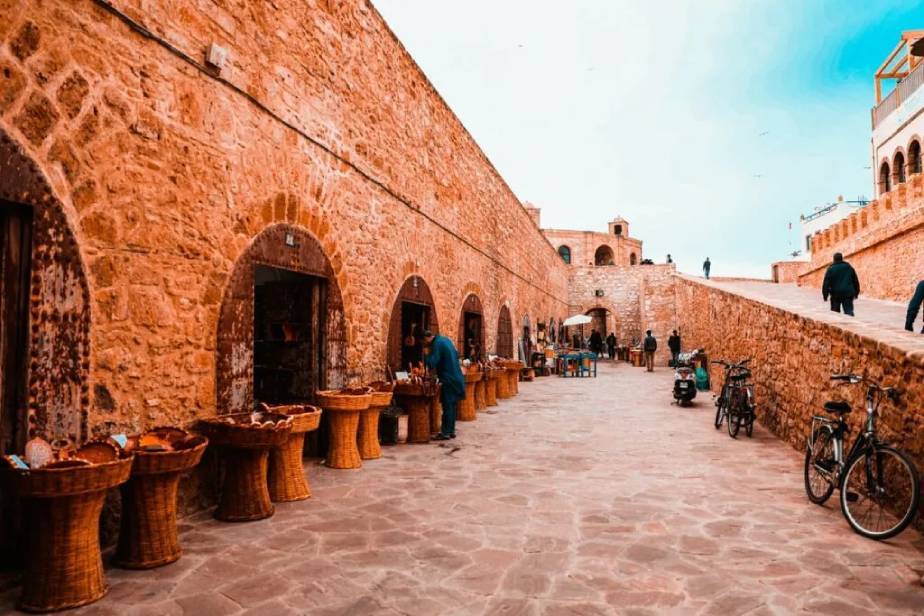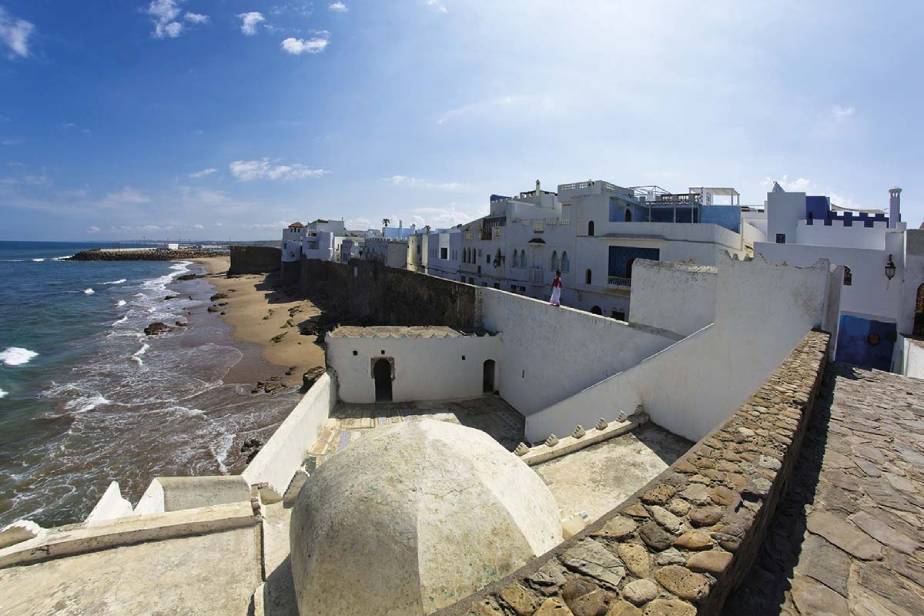Volubilis UNESCO World Heritage Series The curious tourist has several compelling reasons to visit Morocco.the hiking trails in the High Atlas Mountains. The largest traditional markets in all of Africa are found in the historic cities of Fez and Marrakesh. And of course, the stunning Roman ruins spread out across the nation. You did read that correctly. Rome’s ruins! in Morocco. The best Roman ruins in the country, Volubilis in Morocco, are significant not only for their Roman connections to the area but also for a great number of additional reasons Given the size of the ruins, you can explore them on your own without a tour guide if you have a good map of Morocco or just enough time to stroll about. The common Roman pillars preserve the desert’s hue and serve as a reminder of how historically distinct regions were actually connected. Even while the grandeur of Volubilis must mostly be imagined in modern times, a number of significant structures have been rebuilt. After strolling through Decumanus Maximus, the cobblestoned main road, you can explore beneath the Triumphal Arch of Emperor Caracalla. A Roman legion marching into the city is practically audible in your imagination. The Forum, a 1,300 square meter marketplace that was once lined with temples, tiny public offices, and niches containing statues of emperors and local dignitaries, is to your left. It also contains the Corinthian columns of the Capitoline temple, raised by a flight of thirteen steps, the Basilica, the courthouse, and government administration. All of this is set against extremely extensive vistas that were formerly covered with wheat fields and olive trees. Think about the strewn stone blocks appearing magically to create walls, the pillars appearing at doorways and porticos in their proper locations, and the tumbling acanthus leaf pediments atop them all. Roofs, storefront doors, and shutters all emerge out of nowhere. You start to notice movement as people go about their everyday activities gradually.A donkey bleats, a cockroach crows, and market talk rustles in the breeze.The village comes to life and transforms into a vibrant, vibrant community rather than just a scattering of ruins. Volubilis was not abandoned right away, in contrast to many other Roman ruin sites. Its continued use as a community up to the 1700s contributed to its excellent condition. Ancient Roman Ruins of Volubilis, Morocco: Their History: While many tourists wouldn’t consider Volubilis, a city in modern-day Morocco, to be significant to Rome, it was in fact in charge of growing grain that was used all throughout the Roman empire. The magnificent mosaics that are still in outstanding shape are a well-known feature of the remarkable Volubilis ruins. Given that these mosaics are ornamental artwork intended to decorate the floor, their condition is surprisingly good and their colors are vibrant. They are now walled off to prevent visitors from walking on top of them, but they are still simple to see and capture on camera. Although this piece of Roman art may initially appear out of place in Morocco, the southern Berber tribes of that country were never subdued and instead traded with the Romans for the advantage of both parties.Even when Arabic was brought to the area during the Arab conquest, Latin remained a part of the regional tongue! A town of Carthaginian traders had been there for over three centuries when the Romans built up camp there in 45AD when Emperor Claudius officially acquired North African Mauritania. Volubilis is unquestionably the best Roman ruin in all of Morocco. Before the Romans even came, Volubilis was in fact the capital of the Kingdom of Mauritania.Volubilis was near the end of the imperial route when it was founded as a Roman city.One main road that crossed Morocco and headed to present-day Tangier was under Roman authority. One of Rome’s furthest outposts was Volubilis. Roman legions under Rome’s control were unable to defeat the Berber tribes of the Atlas Mountains and subsequently were unable to advance south. Volubilis After The Romans Volubilis started to lose its prominence in the area a little more than two centuries after it was incorporated into the Roman Empire.Roman passed out.A few Volubilian citizens were aware of the turmoil and buried their large sums of money and priceless bronze statues under their villas for safety while the empire was almost completely destroyed by internal strife, killings, and palace coups. Archaeologists just discovered these artifacts 1,700 years after they were created. Nevertheless, the Volubilis survived the fall of the Roman Empire.Greeks, Berbers, Christians, and Jews, many of whom were decedents of those who had fled the oppression and high taxes of the late Roman Empire, were present when the Arabs first landed there in 708. The predominant language of the city was still Latin. In actuality, Volubilis was where Moulay Idriss, the man who founded the modern-day Moroccan nation, originally looked for safety.Idriss was a threat to the Abbassid dynasty because he was a direct descendant of the Prophet Muhammad, and they were attempting to assassinate him. In order to find tranquility, Idriss escaped the Middle East and traveled over the Sahara before arriving in Volubilis in 789. Kenza, an Awraba Amazigh woman, was married to Idriss. Kenza and Idriss had Idriss II.The Idrissids, the first Moroccan dynasty, were established during this time.The Abbassids’ reach eventually became too great. In 791, Idriss was assassinated. The most significant Islamic city in Morocco and the ultimate resting place of Moulay Idriss is located not far from Volubilis. Although Moulay Idriss is a small city with many lovely sights, visitors should exercise caution and respect for religious customs.Non-Muslims are not permitted in any religious or holy sites of this city since it is precious to Muslims. There are tour guides who will help you go as near as is polite, which is a wonderful idea for this region.Keep in mind that you are a guest and that it is always advisable to show respect. In fact, non-Muslims weren’t even permitted to enter the city until a





